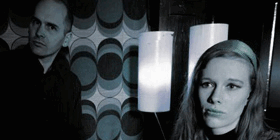
LFO (Low Frequency Oscillator)
LFO (Low Frequency Oscillator)
A Brief History
The LFO, or Low Frequency Oscillator, is a type of electronic oscillator that produces a signal with a frequency below 20 Hz. LFOs are used in a wide variety of electronic music genres, including electronica, techno, house, and ambient.
The Early Years
The first LFOs were developed in the early 1960s by electronic music pioneers such as Robert Moog and Don Buchla. These early LFOs were analog devices that used vacuum tubes or transistors to generate their signals.
The 1970s
In the 1970s, digital LFOs began to be developed. Digital LFOs offered a number of advantages over analog LFOs, including greater accuracy and stability.
The 1980s
LFOs became a standard feature on many electronic music synthesizers and drum machines in the 1980s. LFOs were used to create a variety of effects, including vibrato, tremolo, and filter sweeps.
The 1990s and Beyond
LFOs continue to be a popular and versatile tool for electronic musicians. LFOs are used to create a wide variety of effects, including:
Vibrato: Vibrato is a tremolo effect that varies the pitch of a sound. LFOs are often used to create vibrato by modulating the pitch of a synthesizer or vocal.
Tremolo: Tremolo is a tremolo effect that varies the volume of a sound. LFOs are often used to create tremolo by modulating the volume of a synthesizer or drum machine.
Filter sweeps: Filter sweeps are a type of effect that sweeps a filter across a frequency range. LFOs are often used to create filter sweeps by modulating the cutoff frequency of a filter.
The Elements of an LFO
LFOs typically have the following elements:
Frequency: The frequency of an LFO is the rate at which it oscillates. The frequency of an LFO is typically measured in Hertz (Hz).
Amplitude: The amplitude of an LFO is the amount of modulation it produces. The amplitude of an LFO is typically measured in decibels (dB).
Phase: The phase of an LFO is the point in the cycle at which it starts oscillating. The phase of an LFO can be used to create a variety of effects, such as phasing and flanging.
LFO Applications
LFOs can be used in a wide variety of applications, including:
Vibrato and tremolo: LFOs are often used to create vibrato and tremolo effects. These effects can be used to add richness and depth to a sound.
Filter sweeps: LFOs can be used to create filter sweeps. These effects can be used to create a variety of sounds, such as sweeps, risers, and falls.
Other modulation effects: LFOs can be used to create a variety of other modulation effects, such as pitch bends, volume changes, and pan changes.
LFOs in Electronic Music
LFOs are a versatile tool that can be used to create a wide variety of effects in electronic music. LFOs are used in a variety of electronic music genres, including:
Electronica: LFOs are often used to create the characteristic sounds of electronica, such as arpeggios, sweeps, and risers.
Techno: LFOs are often used to create the driving beats of techno.
House: LFOs are often used to create the atmospheric sounds of house.
Ambient: LFOs are often used to create the evolving sounds of ambient.
Conclusion
The LFO is a powerful tool that can be used to create a wide variety of effects in electronic music. LFOs are a valuable addition to any electronic musician's toolkit.
Posted by November 17th, 2023
Comment
